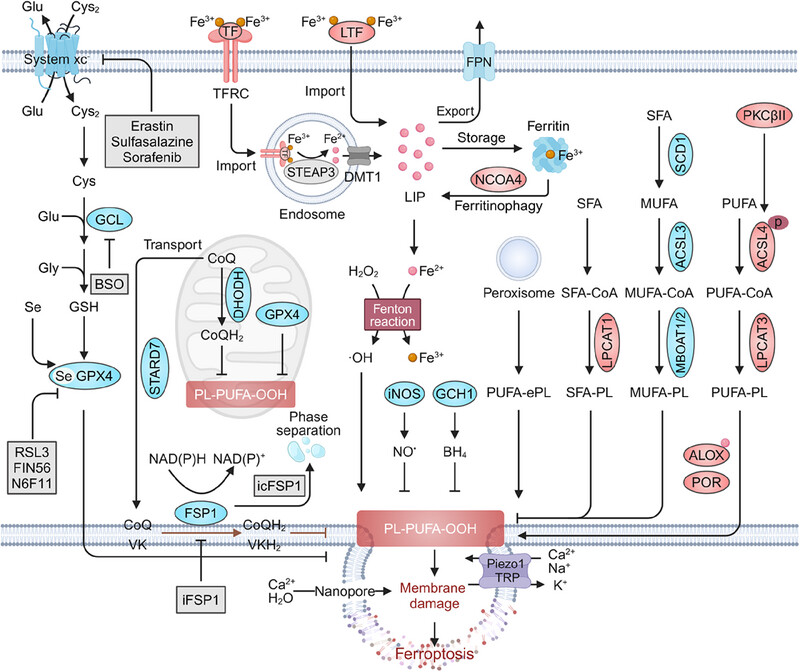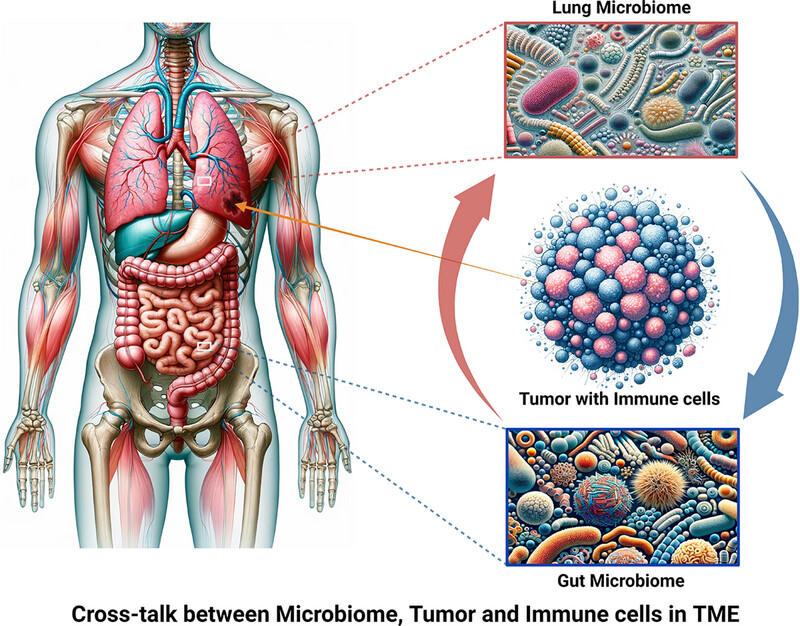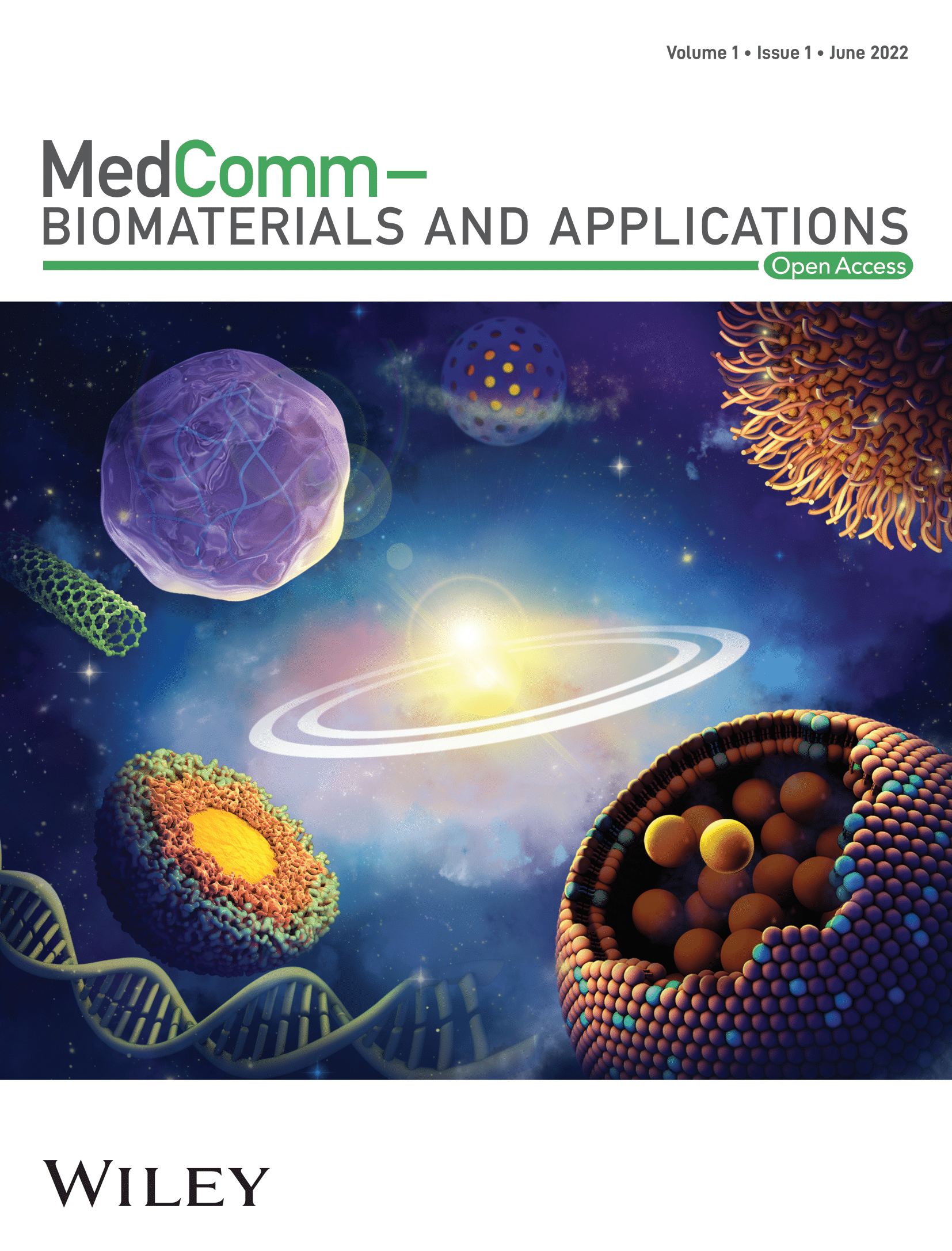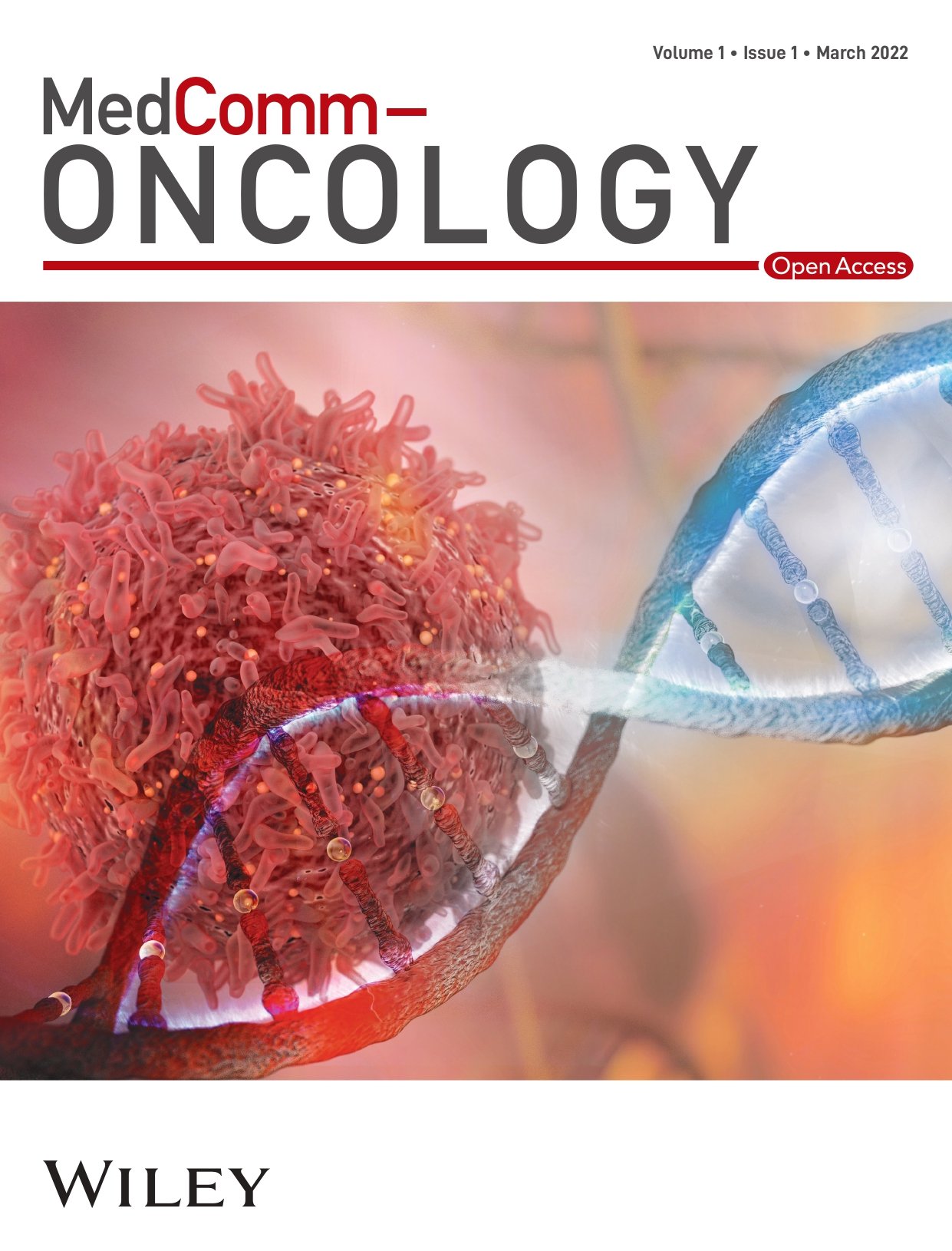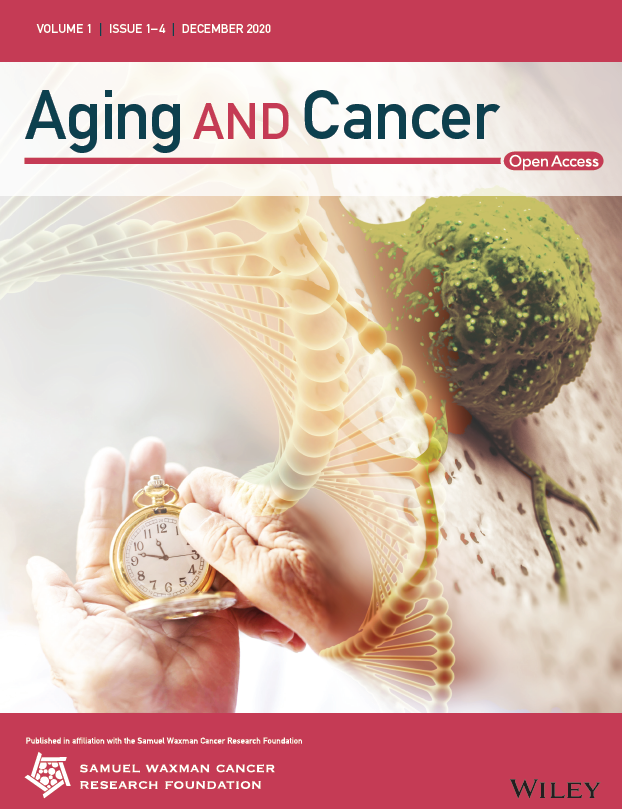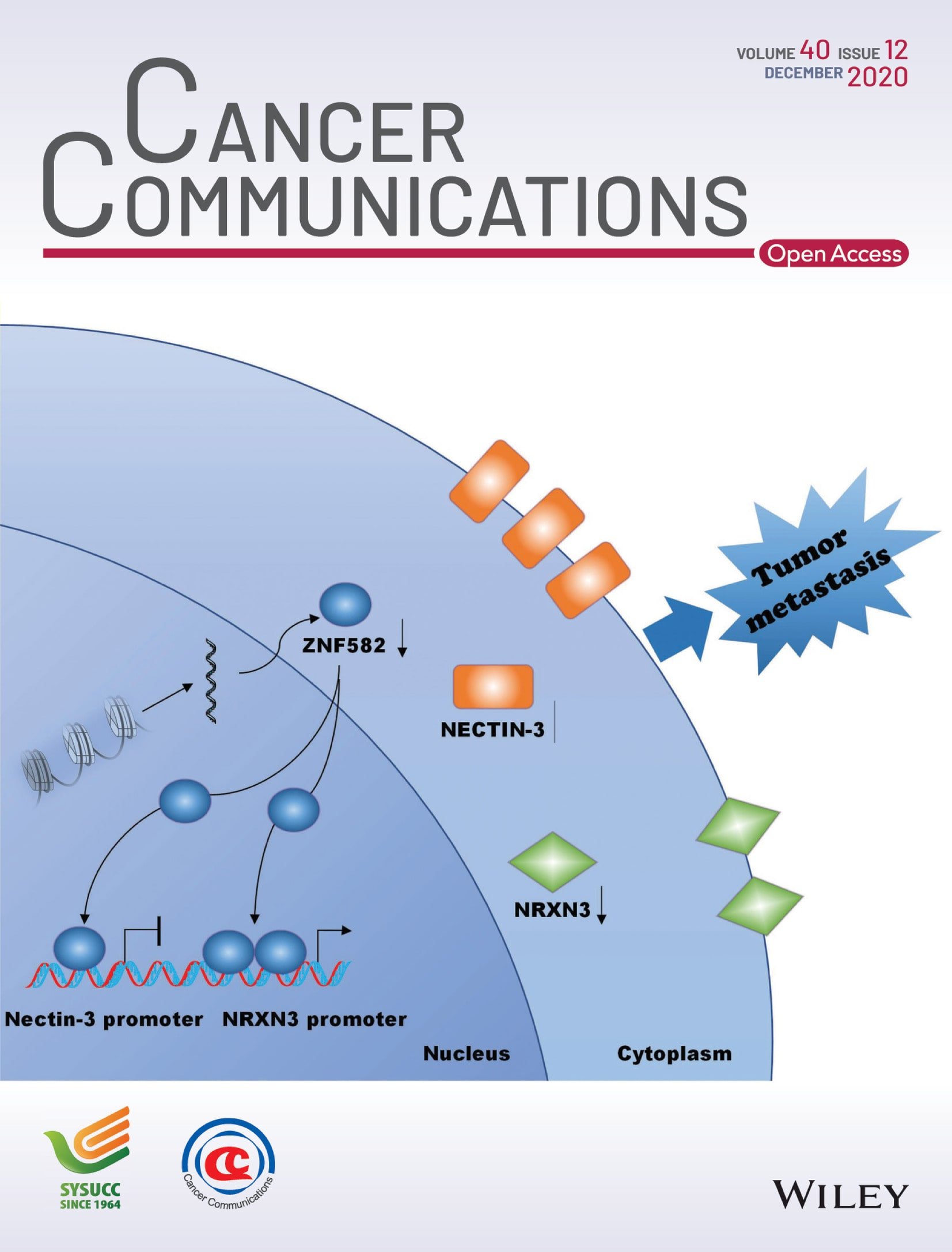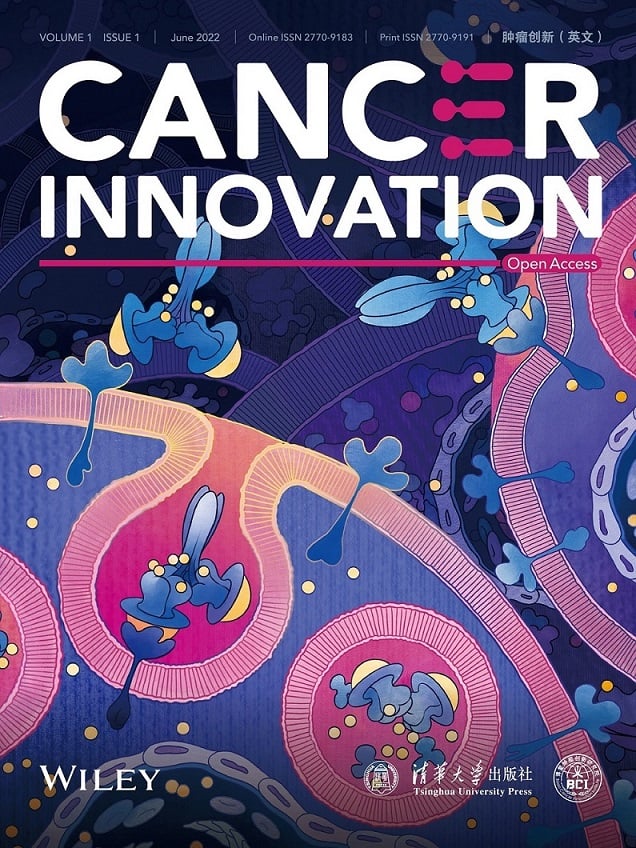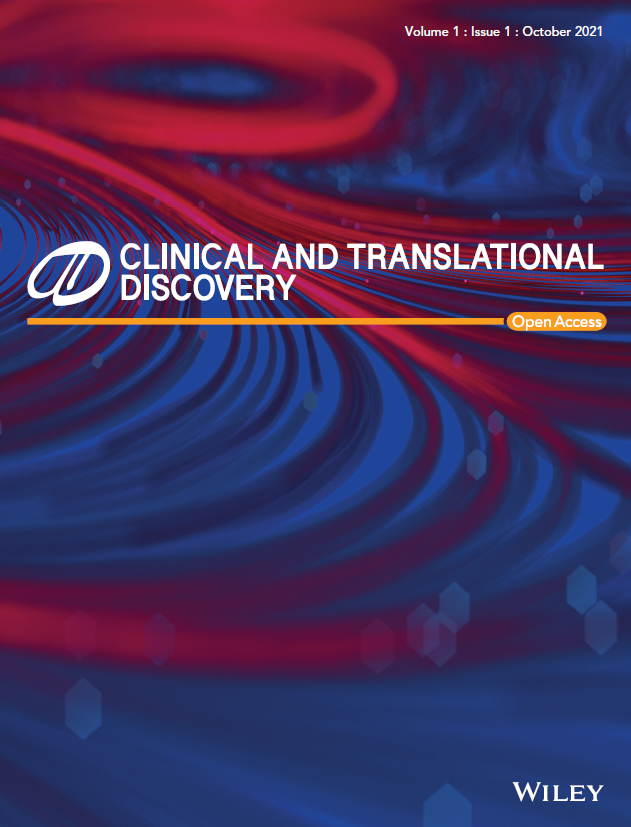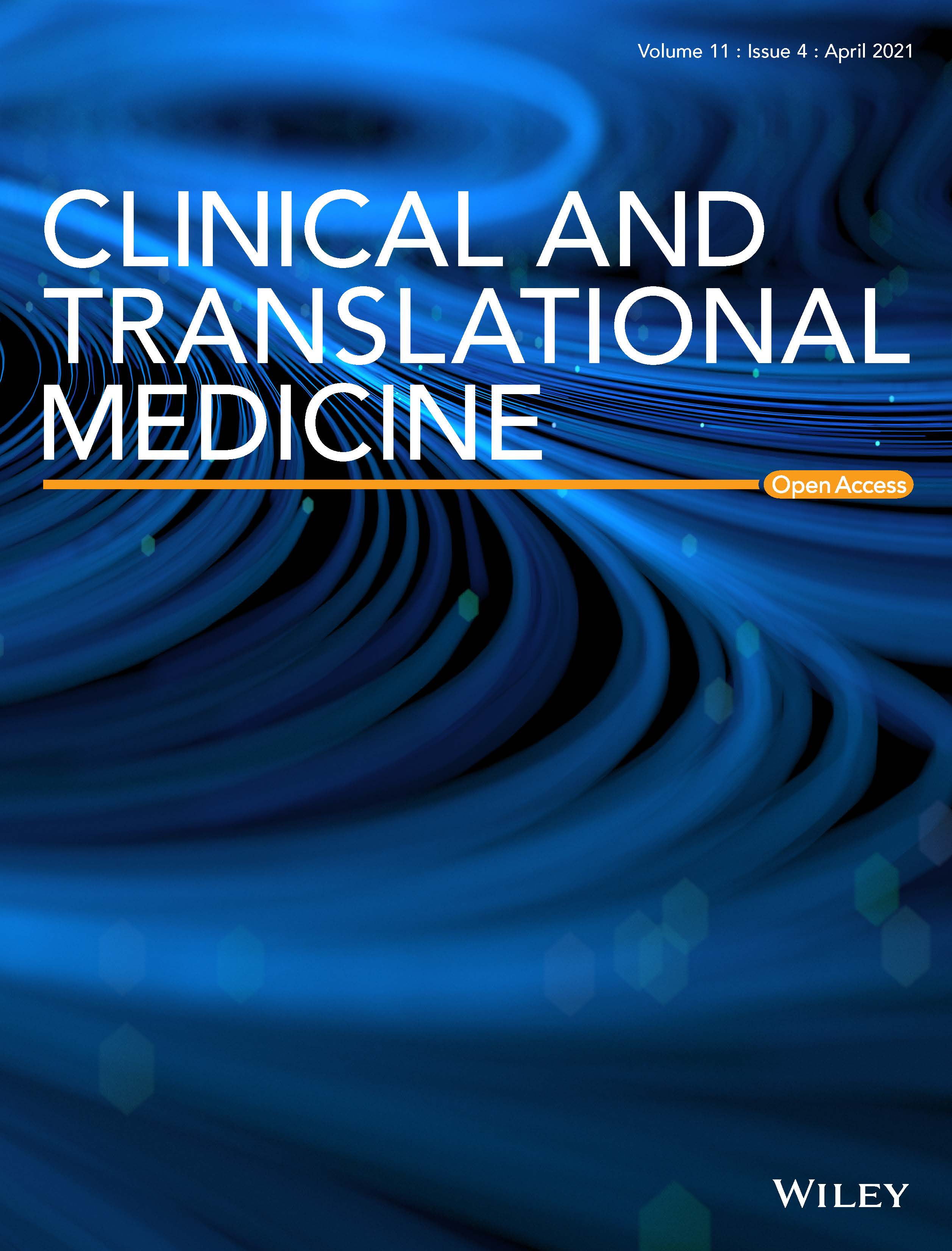Journal list menu
Export Citations
Download PDFs
ISSUE INFORMATION
ORIGINAL ARTICLE
The tissue and circulating cell-free DNA-derived genetic landscape of premalignant colorectal lesions and its application for early diagnosis of colorectal cancer
- First Published: 14 November 2024
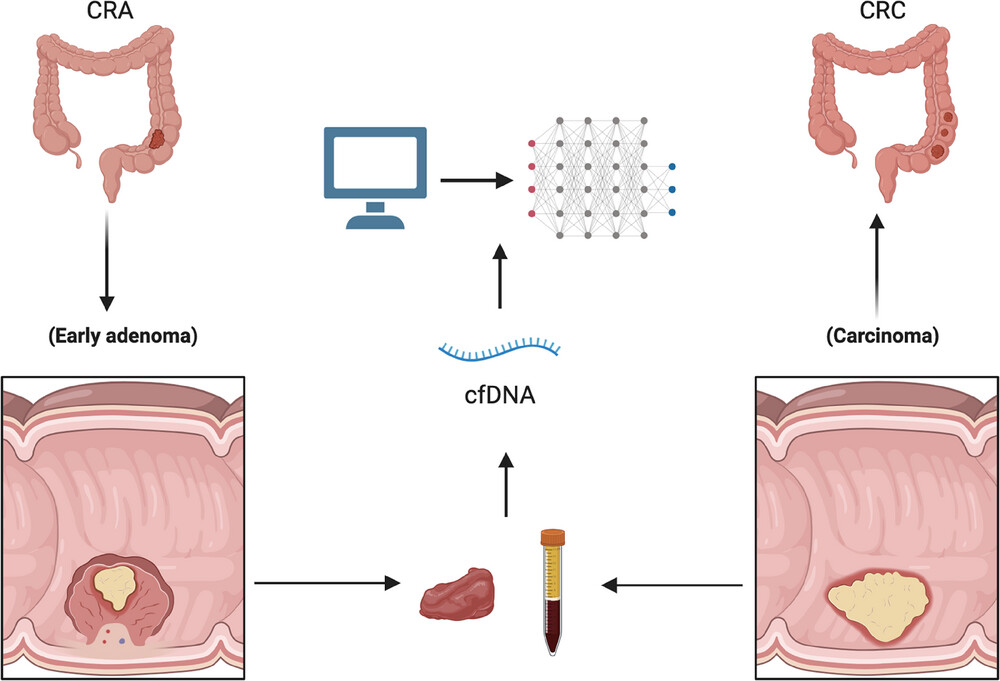
In this paper, to explore the pathogenesis of the progression from precancerous lesions to adenocarcinoma and propose potentially feasible approaches for the early detection of CRC, we retrospectively sequenced paired tissue and plasma samples from 85 patients with conventional colorectal adenomas (CRAs). The identified genetic alterations were compared with those from 78 CRC stage-I patients (CRC-I) from the ChangKang Project .
REVIEW
Gut microbiota in health and disease: advances and future prospects
- First Published: 20 November 2024
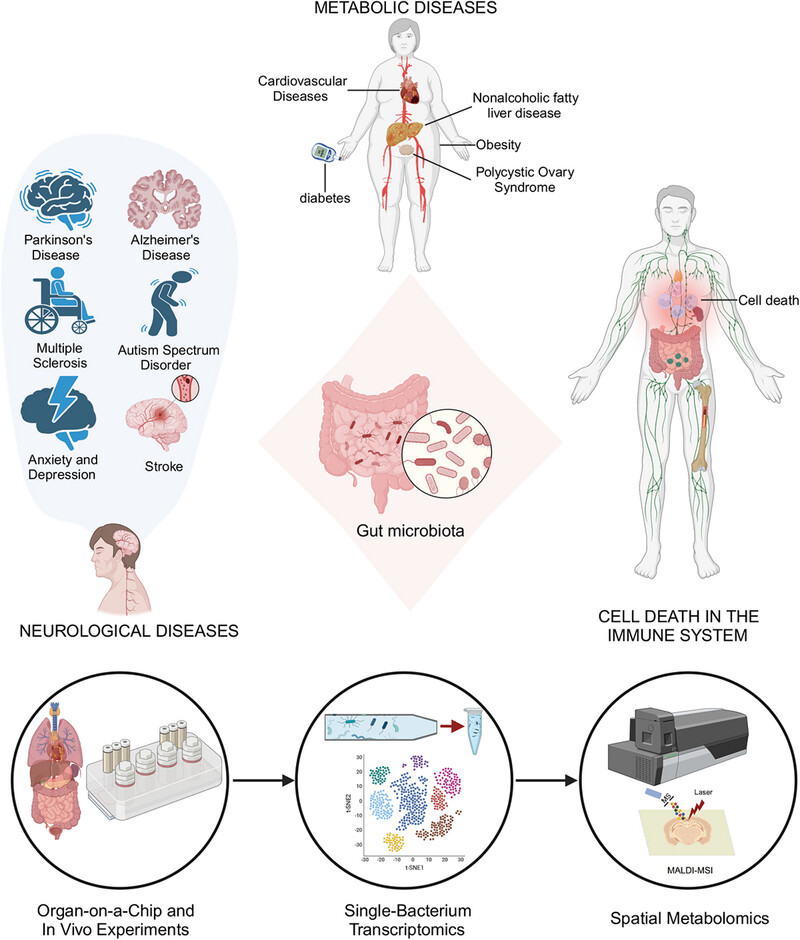
This review discusses how gut microbiota influences metabolic and neurological diseases, then delves into the specific immune inflammation mechanisms related to cell death, such as pyroptosis and ferroptosis. Advanced technologies like organ-on-chip, single-bacterium transcriptomics, and spatial metabolomics are highlighted for their potential in exploring these mechanisms.
ORIGINAL ARTICLE
The histological growth patterns in liver metastases from colorectal cancer display differences in lymphoid, myeloid, and mesenchymal cells
- First Published: 19 November 2024
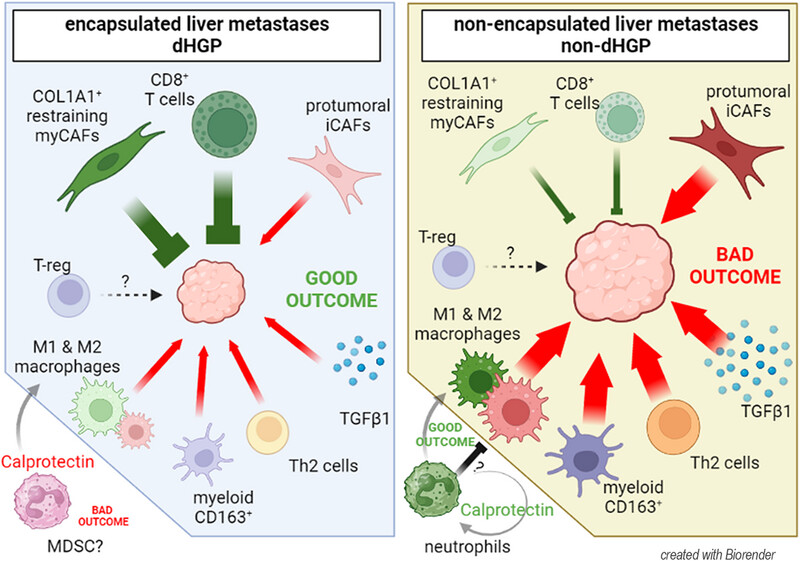
Tumor microenvironment landscapes found in each histologic growth pattern. Two different TME scenarios are depicted depending on the HGP, where most nonencapsulated metastases display a highly immunosuppressive microenvironment while the better outcome of encapsulated metastases might be associated by the presence of cytotoxic T-cells over the tumor nests and the restraining capabilities of an extracellular matrix enriched in Collagen 1. The dual role of Calprotectin, which seems to have a value dependent on HGP, is noteworthy.
Nicotinamide mononucleotide protects STAT1 from oxidative stress-induced degradation to prevent colorectal tumorigenesis
- First Published: 21 November 2024

Nicotinamide mononucleotide (NMN) supplementation reduces tumorigenesis in a mouse azoxymethane/dextran sulfate sodium (AOM/DSS)-induced colorectal cancer (CRC) model. Signal transducer and activator of transcription 1 (STAT1) protein levels are decreased in AOM/DSS-treated mice, with higher levels maintained upon NMN supplementation. Mechanistically, tumorigenesis-associated reactive oxygen species (ROS) induce cysteine residue peroxidation in STAT1, inducing its degradation. NMN supplementation reduces STAT1 degradation by decreasing intracellular ROS levels. Following nuclear translocation, STAT1 regulates downstream gene expression, inhibiting CRC cell proliferation and migration.
REVIEW
Vaccine and therapeutic agents against the respiratory syncytial virus: resolved and unresolved issue
- First Published: 21 November 2024
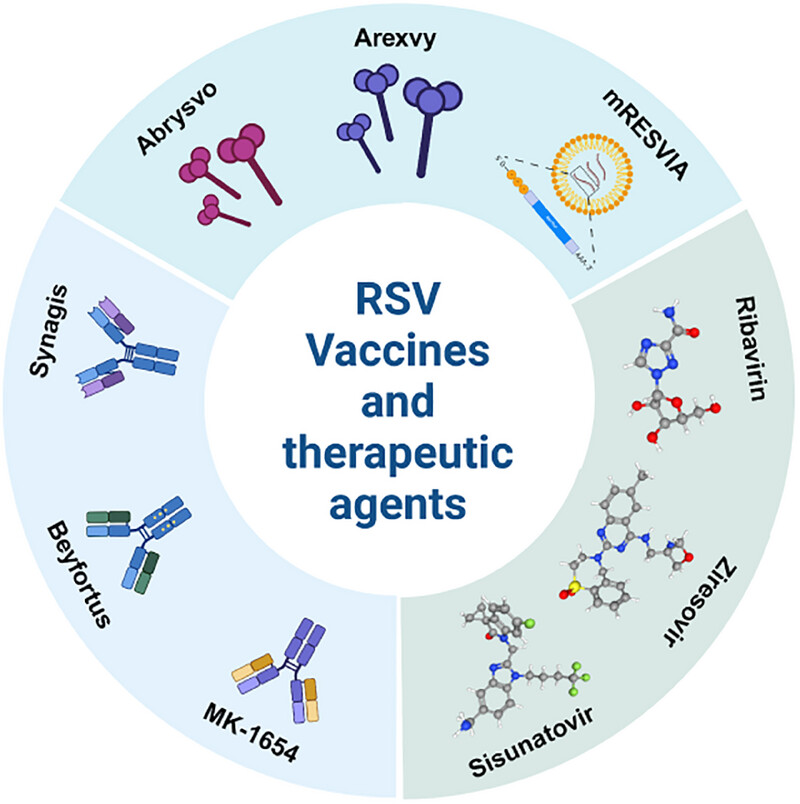
Breakthroughs have been made in the prevention and treatment of respiratory syncytial virus (RSV). Three RSV vaccines, two RSV monoclonal antibodies, and one RSV therapeutic agent have been approved for marketing, and multiple other products are in the clinical study phase. But RSV vaccines, monoclonal antibodies, and therapeutic agents all still have several unresolved issues .
Influence of gut and lung dysbiosis on lung cancer progression and their modulation as promising therapeutic targets: a comprehensive review
- First Published: 24 November 2024
Exosomal circular RNAs in tumor microenvironment: An emphasis on signaling pathways and clinical opportunities
- First Published: 24 November 2024
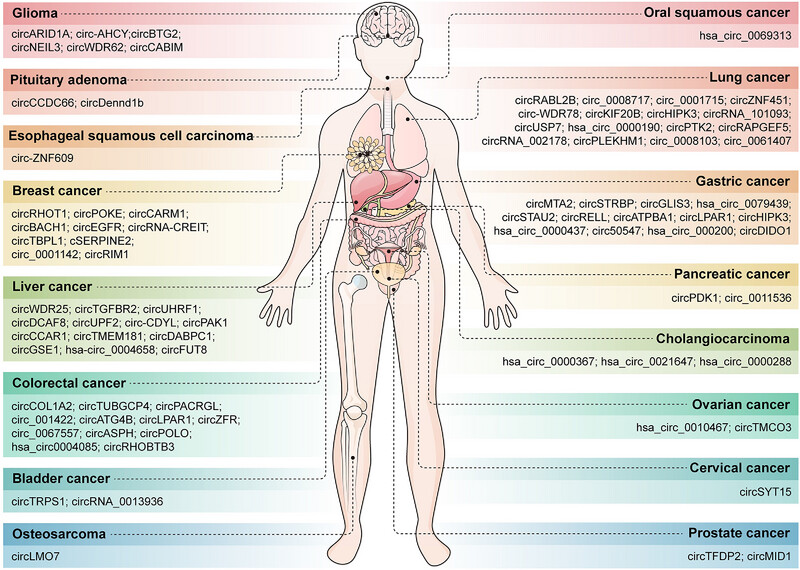
The exosomal circRNAs are differentially expressed in many types of tumors, including glioma, pituitary adenoma, esophageal squamous cell carcinoma, breast cancer, liver cancer, colorectal cancer, bladder cancer, osteosarcoma, and so on. And differentially expressed exosomal circRNAs affect tumor progression by regulating multiple target genes and signaling pathways, which have the potential to become targets for tumor diagnosis, prognosis prediction and tumor therapy.
ORIGINAL ARTICLE
Metabolic reprogramming via mitochondrial delivery for enhanced maturation of chemically induced cardiomyocyte-like cells
- First Published: 28 November 2024
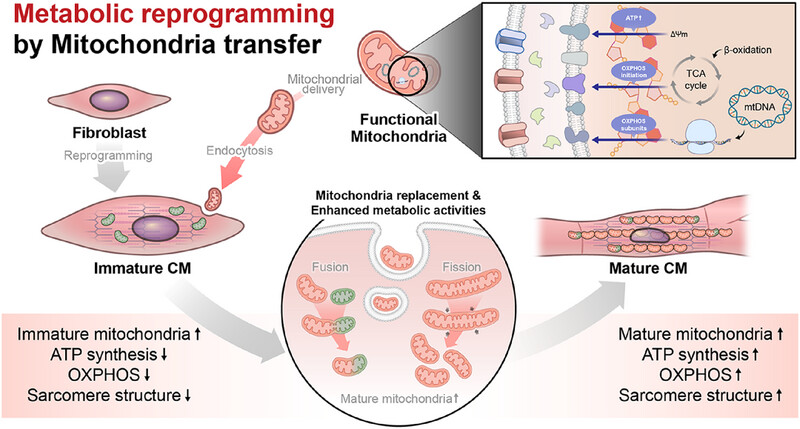
Proposed mechanistic model of mitochondrial delivery inducing metabolic reprograming and maturation of CiCMs. During the process of direct reprogramming, mitochondrial delivery modulates bioenergetics of immature CMs inducing maturation of the cells. After the treatment of functional mitochondria with robust OXPHOS activity, recipient mitochondria are replaced to mature status, and in turn induces CiCMs metabolically active. As a result, the mitochondria-treated CiCMs can exhibit enhanced energy production, respiratory activity, electrophysiological functionality with organized intracellular structures and cardiac-specific characteristics, resulting in mature CMs.
REVIEW
Extracellular vesicles in cancers: mechanisms, biomarkers, and therapeutic strategies
- First Published: 28 November 2024
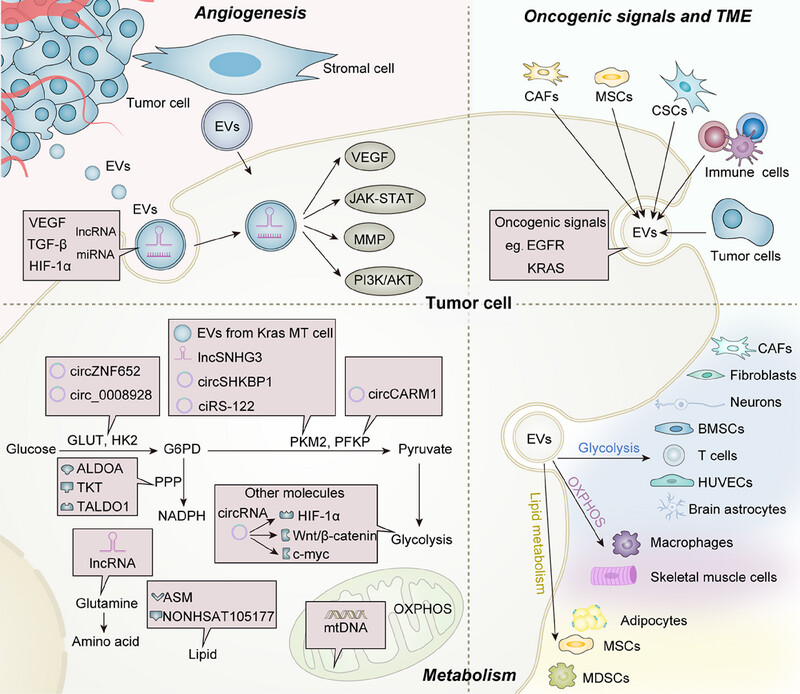
Extracellular vesicles (EVs) composed of proteins, nucleic acids, lipids, and metabolites are a notable mechanism of intercellular communication. This review will examine how biological components in EVs affect cancer growth and the tumor microenvironment's complex interactions. We will also test EV-based liquid biopsy and delivery cargo for therapy. Finally, we outline the current trials to improve EV development.
Ocular immune-related diseases: molecular mechanisms and therapy
- First Published: 28 November 2024
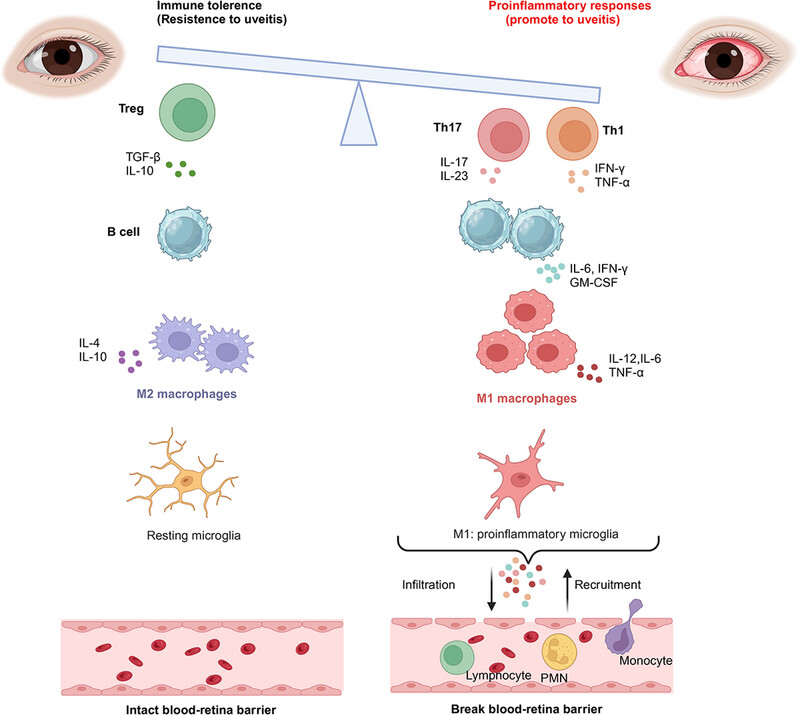
The molecular mechanisms underlying ocular immune-related diseases is due to the dysregulation of immune responses. The unbalanced activation of diverse immune cell types, inflammatory activators and pathways are related to the immunological pathogenesis of ocular immune-related disease which paly an essential role of immune processes in the development, progression and treatment of various ocular immune-related diseases.
ORIGINAL ARTICLE
Defining the features and structure of neutralizing antibody targeting the silent face of the SARS-CoV-2 spike N-terminal domain
- First Published: 28 November 2024

Silent face targeted neutralizing antibodies of SARS-CoV-2 have been rarely reported. We described a neutralizing antibody 3711 targeting a novel epitope shielded by glycans on the spike's silent face, which inhibits the interaction between RBD and hACE2 via steric hindrance. Identification of antibody 3711 with a novel neutralizing mechanism enhances our understanding of neutralizing epitopes on glycan shields of spike.
REVIEW
Programmed cell death: molecular mechanisms, biological functions, diseases, and therapeutic targets
- First Published: 28 November 2024
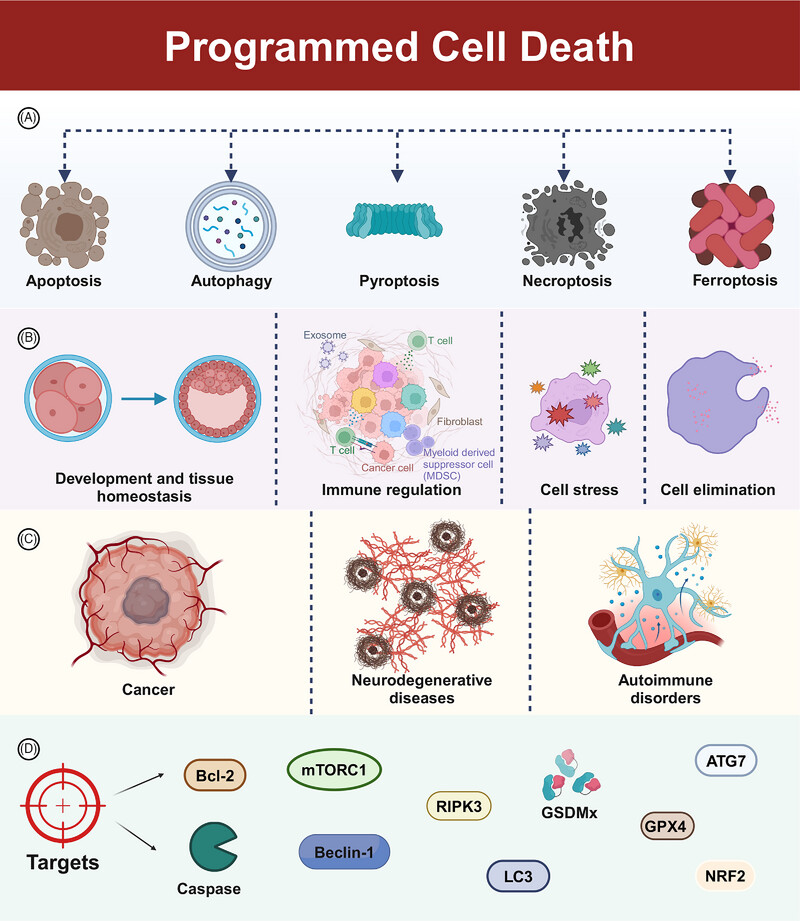
Programmed cell death is a type of autonomic and orderly cell death mode controlled by genes. We reviewed molecular mechanisms of five programmed cell death, including apoptosis, autophagy, pyroptosis, necroptosis, and ferroptosis. Programmed cell death is widely involved in the normal physiological process of the organism. We described the normal biological functions of programmed cell death from four perspectives like development and tissue homeostasis, immune regulation, response to cellular stress, and elimination of damaged or infected cells. Conversely, dysregulated PCD is implicated in the occurrence and progression of numerous diseases. Relevant progressions of programmed cell death observed in cancer, neurodegenerative diseases, and autoimmune disorders were summarized. Based on these, key proteins in each pathway thus become important regulatory targets. PCD-based therapies, including small molecule drugs, cannot be ignored.
Bioinspired micro- and nanostructured systems for cancer therapy
- First Published: 28 November 2024
The role and mechanism of NAT10-mediated ac4C modification in tumor development and progression
- First Published: 04 December 2024
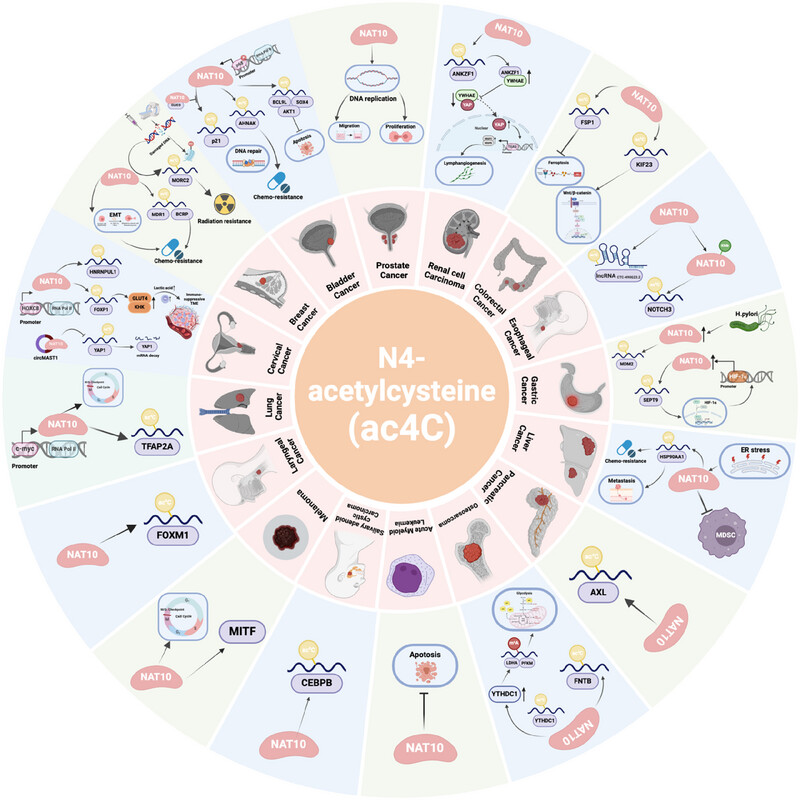
RNA modification is a critical area of study within epigenetics, profoundly influencing the biological functions of tumors. Among these modifications, N4-acetylcytidine (ac4C) stands out as the sole acetylation modification found in eukaryotic RNA. This modification is catalyzed by N-acetyltransferase 10 (NAT10). ac4C enhances gene expression by modulating mRNA stability and translation efficiency, thereby playing a pivotal role in various aspects of tumor biology, including tumor progression, drug resistance, and immune evasion.
ORIGINAL ARTICLE
Single-cell transcriptomic analysis of glioblastoma reveals pericytes contributing to the blood–brain–tumor barrier and tumor progression
- First Published: 04 December 2024
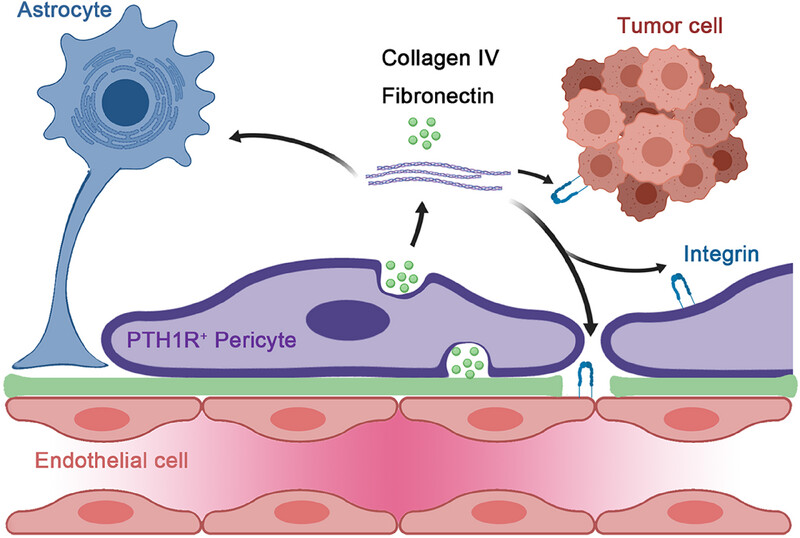
This study identified a type of pericyte highly related to BBTB function in GBM, with PTH1R potentially serving as a marker for these pericytes. PTH1R+ pericytes expressed extracellular matrix (ECM) genes to interact with integrins of other GBM cells, and had increased expression of ECM genes such collagen IV and FN1 in GBM. The expression level of PTH1R was negatively correlated with collagen IV expression, FN1 expression, and BBB function in brain.
REVIEW
Cerebral vascular malformations: pathogenesis and therapy
- First Published: 08 December 2024
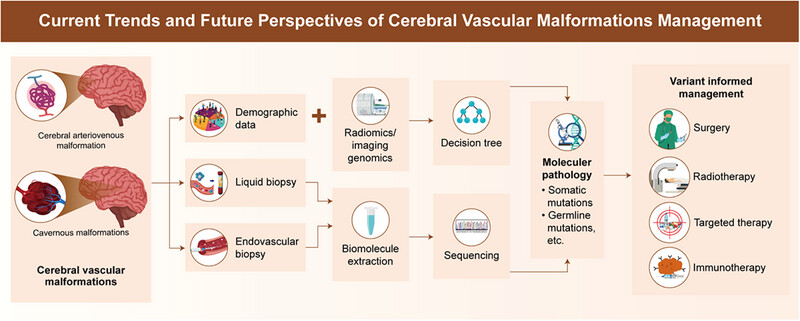
CVMs management based on imaging genomics and liquid biopsy. In the future, somatic or de novo germline mutation information could be used to direct neurosurgical and medical management of CVMs. Somatic or germline variants can be acquired from imaging genomics or liquid biopsies preoperatively. These variants could then be correlated with clinical demographics and medical history to expand research efforts and identify targeted therapies or immunotherapy that could be used as monotherapy or adjuncts to surgery. This information could also be used for surgical planning if necessary.
Atopic dermatitis: pathogenesis and therapeutic intervention
- First Published: 08 December 2024
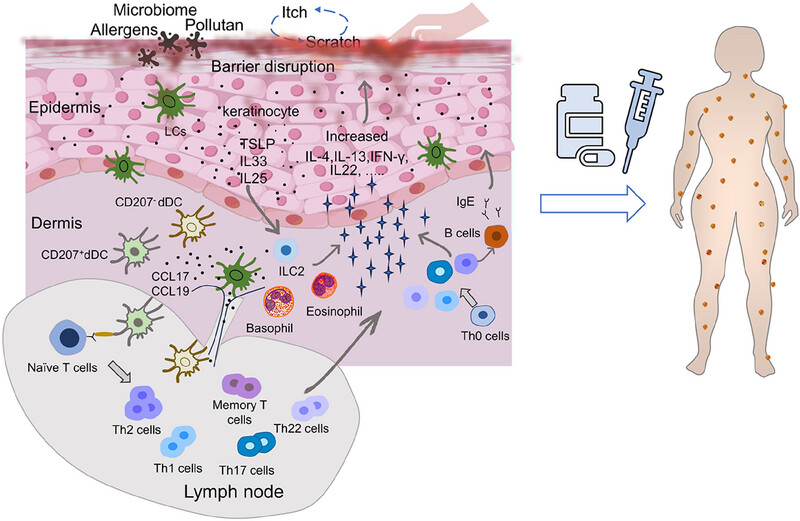
Atopic dermatitis (AD) is a chronic pruritic inflammatory skin disease, and its complex pathogenesis is closely linked to genetic and environmental factors, skin barrier dysfunction as well as immune dysfunction, which imposes a significant socioeconomic burden in all countries. The compromised function of the skin barrier leads to the release of alarm substances and triggers activation of the type 2 immune pathway, resulting in recruitment various immune cells to the skin for coordinated cutaneous immune responses. In this review, we comprehensively outline the methodologies of experimental AD models and extensively discuss therapeutic interventions, with a focus on the contributions of various skin immune cells to the regulatory mechanisms of AD. The precise characterization of the functional plasticity within these skin immune cells will facilitate more accurate targeting of specific functional modules, thereby offering broad therapeutic applications for the prevention of AD.
ORIGINAL ARTICLE
Multimodal data fusion AI model uncovers tumor microenvironment immunotyping heterogeneity and enhanced risk stratification of breast cancer
- First Published: 11 December 2024

This study introduces an advanced cohort research on breast cancer prognosis, revealing four distinct immune–metabolic subtypes with notable survival differences. Using cutting-edge AI techniques, we developed a pathology-based model integrating a modified ResNet50 network with an attention-gated mechanism for subtype prediction. Additionally, our multimodal AI model, incorporating deep learning and data fusion, accurately predicts prognostics scores.
Inhibition of Selenoprotein I promotes ferroptosis and reverses resistance to platinum chemotherapy by impairing Akt phosphorylation in ovarian cancer
- First Published: 11 December 2024
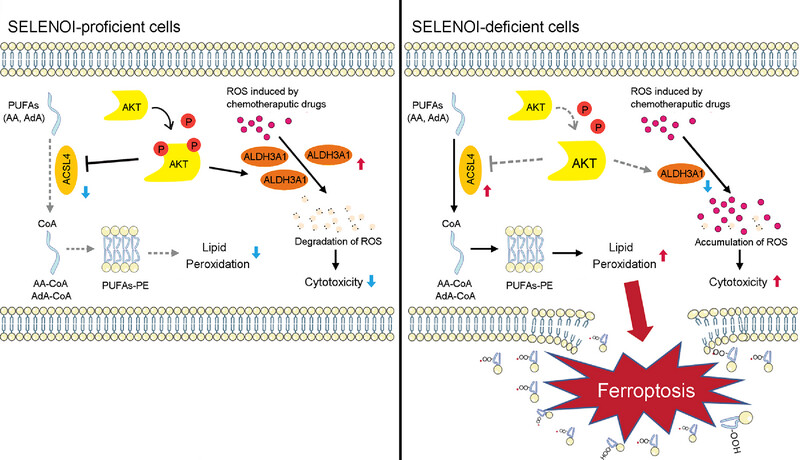
Graphic summary of targeting SELENOI for promoting ferroptosis and reversing chemoresistance in ovarian cancer. Inhibition of SELENOI activated unsaturated fatty acid synthesis and impaired Akt phosphorylation, resulting in the upregulation of ACSL4 expression and induction of ferroptosis. Reduced Akt phosphorylation also led to the downregulation of ALDH3A1 expression, a key gene associated with cisplatin-resistance, thereby enhancing cisplatin cytotoxicity in SELENOI-silenced ovarian cancer cells.
REVIEW
Deubiquitinases as novel therapeutic targets for diseases
- First Published: 13 December 2024
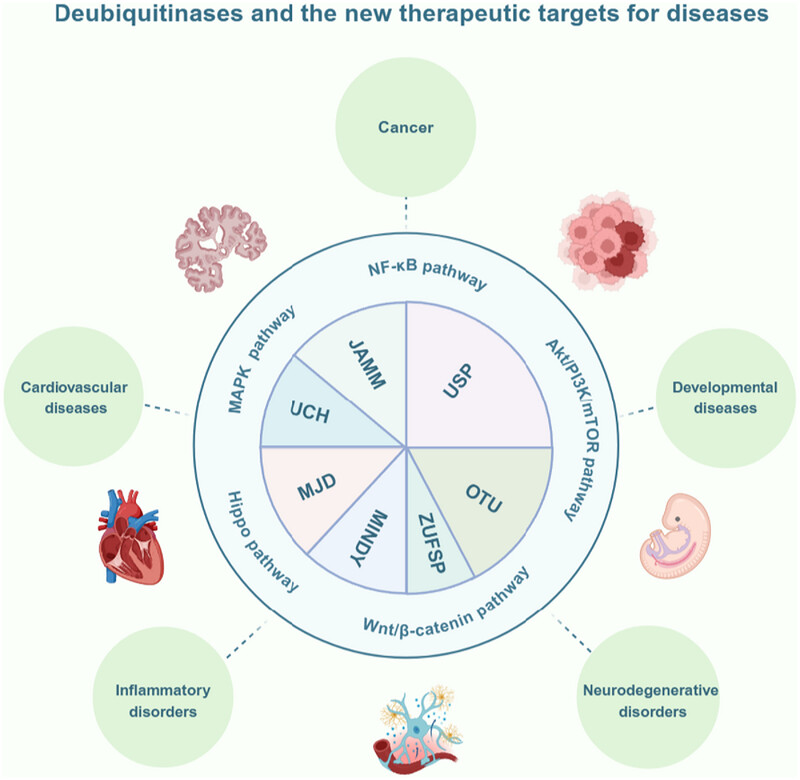
Deubiquitinating enzymes (DUBs) are crucial for cellular homeostasis, modulating ubiquitination by removing ubiquitin or cleaving ubiquitin chains. With about 100 types in humans, DUBs balance the activity of E3 ubiquitin ligases, ensuring proteostasis and responses to stress. They regulate key pathways such as NF-κB, PI3K/Akt/mTOR, and MAPK, influencing tumorigenesis and various diseases, including cancer, neurodegenerative diseases, cardiovascular diseases, inflammation, and developmental disorders. Highlighted for their structural and functional diversity, DUBs represent promising therapeutic targets. This overview addresses their roles in cellular signaling, cancer, and the challenges in developing effective DUB inhibitors.
Therapeutic potential of Parabacteroides distasonis in gastrointestinal and hepatic disease
- First Published: 16 December 2024
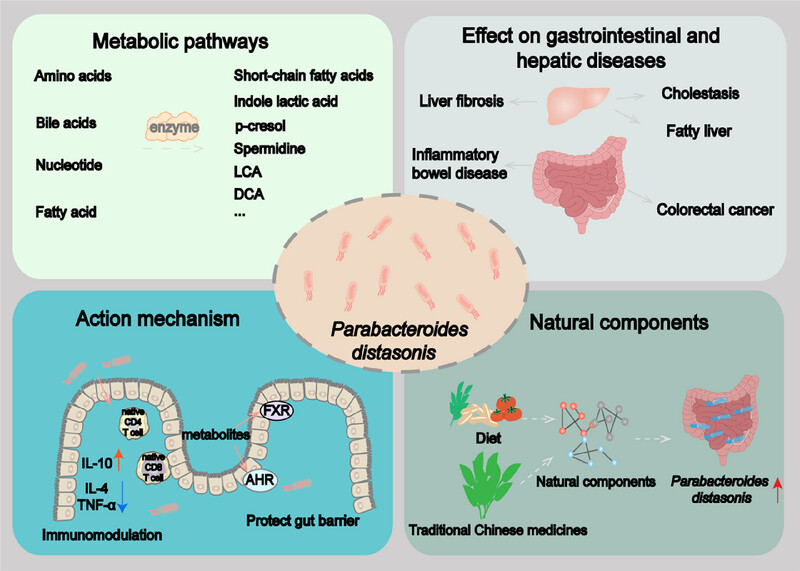
This review illustrate the metabolic network medicated by Parabacteroides distasonis and its role and action mechanism in gastrointestinal and hepatic disease. The natural components affecting Parabacteroides distasonis was summarized, which show the therapeutic potential for gastrointestinal and hepatic diseases.





